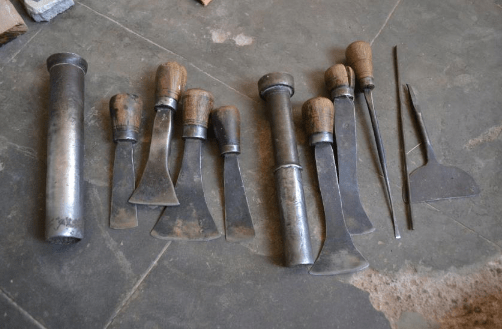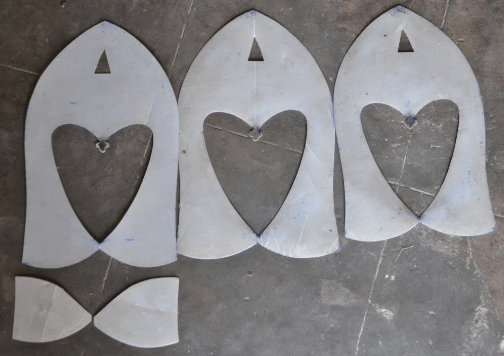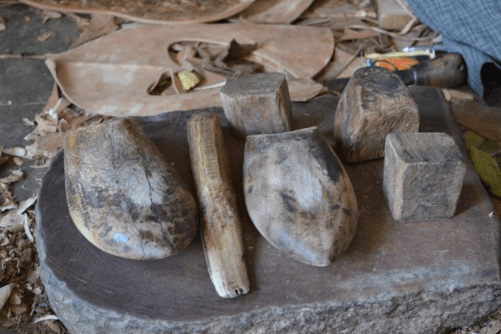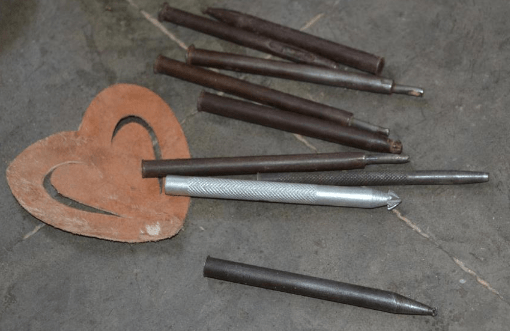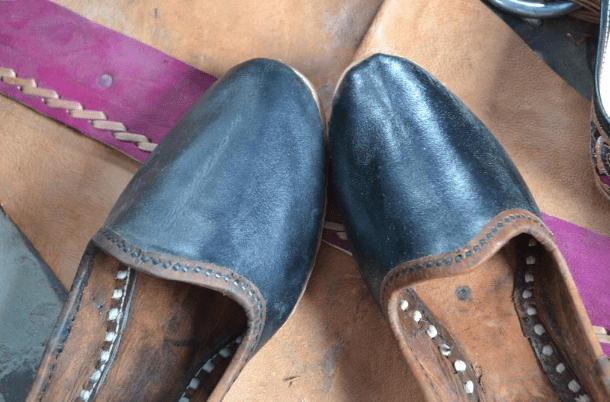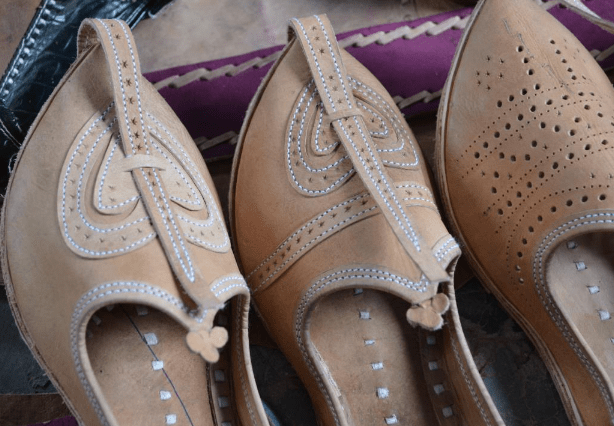The craft of making handmade Mojari is one with a traditional significance as it has been passed down from times long before ours. They are made using leather (from cow, camel buffalo etc. depending upon the region of production) and cotton threads, which are eco-friendly as well as strengthens the leather. Mojaris have a great significance in India as the royalties wore them as well as the common people. Handmade Mojaris of Rajasthan and Punjab are well known. Though, the different regions have similar process and material but they have different designs, motifs and patterns to distinguish them from one another.
Global Presence
Other then India Mojar is also found in Pakistan. Initially Mojari making was practiced in India as a whole including Pakistan before the separation into two different countries. Artisans are found near the border region across both the counties. Mojaris across the border are similar; the difference starts from Multan in Pakistan and Punjab. Juttis in Multan are heavily embellished with floral motifs especially for men, which are proximate to Punjabi Juttis but these are not as heavily embellished as the multani Juttis.
Geographical Region
Mojaris or Juttis or khussa are known with similar as well as different names across various states in India and Pakistan. Artisans practicing this craft are found majorly in Rajasthan and Punjab; other regions include Delhi, Maharashtra and Karnataka. In Pakistan Mojari making artisans are found majorly in the border region, famously found in Multan. They practice this craft round the year but the number of artisans have decreased over the years due to industrial products.
Practitioner Community
The Mochi community and the Regar community in Rajasthan and in Punjab practice this craft. In Punjab where artisans from Rajas than and from Kasur in Pakistan have settled their generations ago, since the age of kings and queens. Men do the cutting, pasting and stitching of the upper to the sole of a Mojari and Women do the delicate work of embroidery on the Mojaris and Juttis. Artisans still practicing this craft are been working there entire lives but due to challenges faced by market and less pay they do not include their children in the traditional practice.
Materials
Raw materials required for making Mojari are
• Chamda (leather)
• Sutt thread (Raw cotton thread)
Tools
Tools used to produce a Mojari
• Lohe ki rampi/rampi & Mogri(and Variations of the two)
The cylindrical tool is mogri use to apply force.
• Farma (stencil and the wooden frame)
• Chap (homemade pointless need)
Step 1 –Procuring the leather
Step 2 –Cleaning the leather
Step 3 –Cutting out the upper
Step 4 –Punch surface designs
Step 5 –Finishing the upper
Step 6 –Cutting out the sole
Step 7 –Finishing the sole
Step 8 –Stitching the Panna and Tala
Step 9 –Finishing the Mojari
Designs/ Motifs
They have two structural designs. One they call Jutti, which are black in colour and is only worn by the villagers. They also sell them if the customer wants to buy. The other they call Mojari, which have a design either punched on them or stitched. These are what they call Juttis, worn by the local villagers and is made of hard leather. They are hand stitched with later lase and a bit untidy.
These are Mojaris; they have a different structural design. They are point at the toe. They have a punched surface design or a pan punched and stitched on the Mojari front. They consider pan as a symbol of good and is a reason they use it on their Mojaris. They claim that these are one of kind Mojaris and are only found in their region and nowhere else.
There are two more designs. Production of these Mojaris involves women as well. But they are not in production because demand for these types of Mojaris is very few.
Products
Traditionally made products are Juttis and Mojaris. They sell Mojaris in the market as which are sold at the local retail store only. Juttis are worn only by the people in the village but are also available for sale only if a customer requires demands.
Challenges
The major challenge they face is the market and industrialized products. Their products are not sold at the price that would benefit them and the money they make only is barely enough to run their day-to-day life. Because of the reason that there is no money in practicing this craft skilled artisans are leaving this practice and join jobs that would pay them to run their lives. Dairy mahulla, Shivbadi is a village in Bikaner districts full of artisans that used to practice Mojari making. Now due to the reason of not able to generate enough working capital, they do no encourage their Children to join the same practice and even the number of women helping has become to almost nil.



